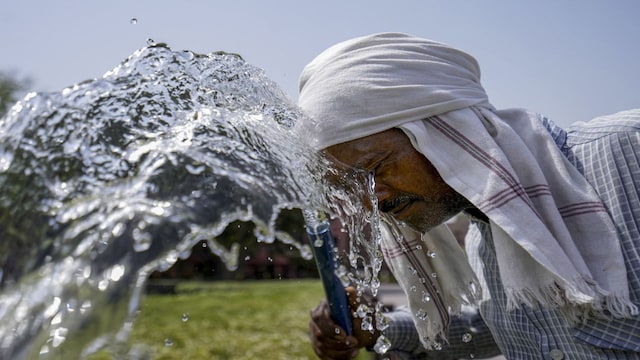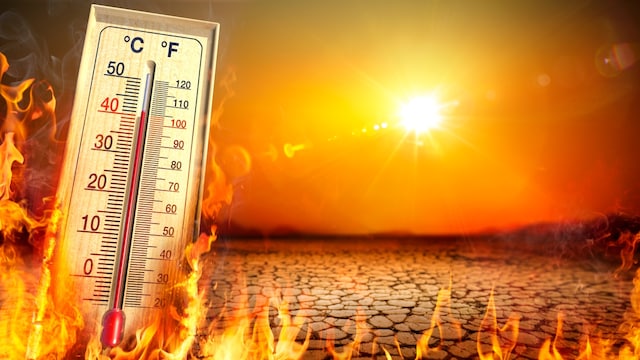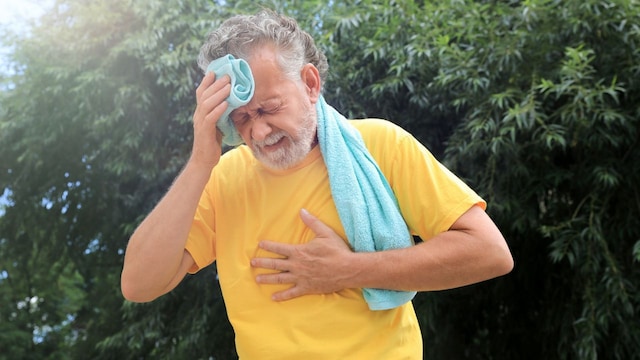 1 / 8
1 / 8The India Meteorological Department (IMD) has issued an orange alert for Delhi until June 11, following Monday’s blistering temperature of 48.9 degrees Celsius. Very hot conditions are expected to persist until at least June 12, with daytime temperatures around 44 degrees Celsius and warm nights at 28 degrees Celsius. (Image: PTI)

 2 / 8
2 / 8The IMD confirmed that heatwave conditions have gripped the Haryana-Chandigarh-Delhi region, with several cities, including Ayanagar (Delhi), nearing 45 degrees Celsius. The heatwave is also expected to affect Jammu and Kashmir, Punjab, Haryana, Chandigarh, and parts of Uttar Pradesh and Madhya Pradesh this week. Excessive heat can cause serious illness and, in some cases, be fatal. Here’s a look at what happens to the human body in extreme temperatures. (Image: PTI)

 3 / 8
3 / 8Not Too Hot, Not Too Cold | To function properly, the human body needs to maintain a core temperature close to 37°C. This internal temperature is regulated by the hypothalamus, a part of the brain that constantly monitors the body’s temperature and compares it to the normal 37°C. When the surrounding temperature is higher, the body absorbs heat from the environment. If the body temperature is low, the hypothalamus triggers heat production to maintain warmth. Conversely, if the body temperature is high, the body initiates sweating to release heat and cool the skin. (Image: Canva)

 4 / 8
4 / 8Humidity Makes Things Worse | When heat and humidity rise simultaneously, sweating—our body’s natural cooling mechanism—fails to work effectively. As a result, the body’s temperature can continue to climb. If the core body temperature exceeds 37°C, it can lead to heat stroke, a life-threatening medical emergency. (Image: Canva)

 5 / 8
5 / 8Why Heatwaves Are Dangerous | When it’s very hot, the human body has to work harder to keep organs and tissues at their normal, healthy temperatures. If these hot conditions persist for many days and nights, they compound the harmful effects of heat on the body. Long heatwaves often bring hot nights as well, reducing the body’s recovery time and making it harder to get restorative sleep. As a result, the body becomes over-stressed and more susceptible to overheating. Prolonged exposure to such conditions strains the cardiovascular system, increasing the risk of serious health problems. In severe cases, this can even lead to heart and kidney failure.

 6 / 8
6 / 8Organ Failure Caused by Heatstroke | If the body’s temperature rises too quickly, its natural cooling mechanism—sweating—stops working effectively. To try to regulate its temperature, the body dilates blood vessels in the skin, but constricts those in the gut. This shift triggers a massive inflammatory response, as the immune system reacts to toxins entering the bloodstream. Reduced blood flow in the gut makes the intestinal cells more permeable, allowing harmful substances to leak into the blood. As the immune system tries to fight off these toxins, it inadvertently damages the body’s own tissues and organs. (Image: Canva)

 7 / 8
7 / 8Cardiovascular Stress | In heat stroke, sweating stops, and the skin becomes dry and flushed. The body attempts to cool itself by dilating blood vessels in the skin, which traps more blood there. This reduced return of blood to the heart means the heart itself becomes deficient in oxygen and nutrients, increasing strain on it. Consequently, the heart has to work harder to pump the limited remaining blood out to the rest of the body. This sustained strain and oxygen deficiency can ultimately lead to a heart attack. (Image: Canva)

 8 / 8
8 / 8Kidney Failure | Prolonged sweating causes dehydration. If fluids aren’t replenished, blood volume shrinks. This leads to strain on both your heart and kidneys. When combined with other effects of heatstroke, such as rising body temperature and the existing strain on the heart, the stress on the kidneys significantly increases, which can ultimately lead to kidney failure. (Image: Canva)



